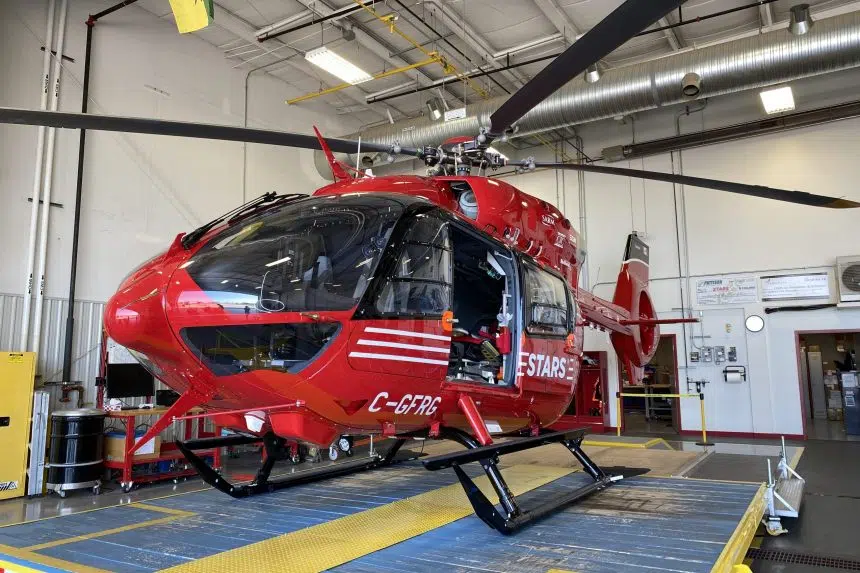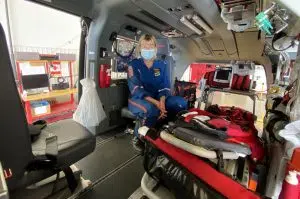Right before the unveiling of the new Airbus H145 STARS helicopter, one of the old legacy aircrafts lifted off, taking flight to save another life.
It was just one of thousands of moments when STARS Air Ambulance has been called on a mission — and it could not have been done without the contribution of Rod Gantefoer, who helped bring STARS to Saskatchewan.
In fact, the new state-of-the-art helicopter is named after Gantefoer. Under the pilot’s door is the registration mark “C-CFRG,” the last three letters standing for “Founder Rod Gantefoer.”
There to help reveal the aircraft was STARS VIP (Very Important Patient), Carrie Derin.
On a quad outing in 2012, Derin “was pierced though her abdomen and impaled against her seat by a poplar tree that had fallen on the logging road trail. Her injuries were severe, including a lacerated liver, a damaged diaphragm, shattered ribs and significant blood loss.”
“None of us would be here celebrating without the hard work and determination of the man behind the cause,” Derin said. “I cannot thank Rod and STARS enough for making all of this possible, but knowing Rod is officially riding along on all these further missions makes my heart full.
“Without the vision and success of Rod’s dream, not all of these families may have their loved ones to hold. We were fortunate enough in August of 2012 to meet a wonderful group of individuals who made one of the worst days of our lives a little bit more bearable.
“Over the eight years since my accident, my husband and I have put a cottage at the lake where we both grew up and continue to enjoy nature. We’ve been fortunate to witness our oldest daughter graduate high school and move into adulthood, teach our youngest to drive, be there for her 2020 pandemic graduation and support her as she completed her first year of the online university. My husband and I will be celebrating our 28th wedding anniversary this fall.”
After 10 years of service, STARS has served almost 8,000 people. One new fully equipped medical helicopter costs $13 million. It features new advances in safety to make night flying safer, an enclosed tail rotor door and a back area that was designed in collaboration with the air medical crew.
Some of the medical features include ventilators, cardiac monitors, and IV pumps.
“The biggest difference is the power and the capacity of the aircraft,” said Andrea Robertson, president and CEO of STARS. “You look at a day like today, it’s gorgeous (and) hot. When we’re leaving here to go a long distance, we’re carrying a lot of fuel. It’s difficult to take off in this weather. So we’re really, really limited by weight. When it’s very warm, (with) this aircraft, that will never be a problem.
“So (a key feature is) massive power so that we can get off the ground in challenging conditions faster. But the biggest thing is that it’s the new version. The aircraft we were flying before is 36 years old. It’s not that it’s done, it’s that you can’t get parts for it anymore. So when you’re in a 24/7 obligation to the population, you need to make sure that you’re available, and this aircraft is going to do that for decades to come.”
When all is said and done, across Saskatchewan, Manitoba and Alberta, there will be 10 new helicopters in total to complete the fleet.
“In April of 2012, STARS was welcomed with open arms to Saskatchewan, with the launch of the STARS Lottery,” Derin said. “Thinking it was a great cause, I couldn’t imagine what buying that ticket would mean to me. Although I didn’t win anything that year in the lottery, I was the biggest winner of all.
“STARS fills a gap in our health-care system that you would never know was there until you needed it. I urge you to continue your support to keep STARS in the sky and keep our angels flying high.”












